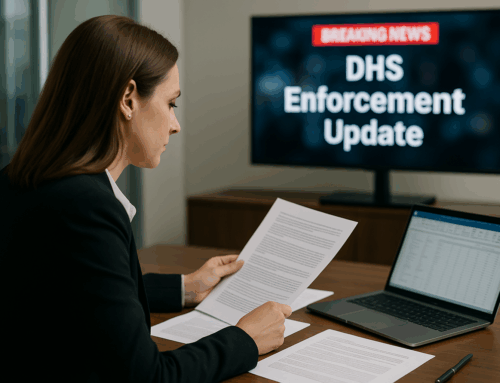Navigating Green Card Options for Superstar Employees: Streamlining Pathways to Permanent Residency
In today’s competitive global market, attracting and retaining top talent is crucial for business success. However, the lengthy and complex U.S. green card process can pose significant challenges for both employers and their exceptional employees. A recent webinar titled “Green Card Options for Superstar Employees” shed light on alternative pathways to permanent residency, aiming to alleviate these challenges and expedite the process for highly skilled individuals.
Understanding the Challenges with the Traditional PERM Process
The Department of Labor’s PERM process, which is a common route for employment-based green cards under the EB-2 and EB-3 categories, is notoriously time-consuming. The total time before filing (Pre-Filing TOT) can exceed 14 months. Once the PERM application is filed on Form ETA-9089, adjudication by the Department of Labor can take another 14 months.
This extended timeline has significant implications. For instance, employees on H-1B visas may encounter issues with the six-year maximum stay limit if PERM is not filed at least a year before the visa expires, potentially forcing them to leave the U.S. Additionally, the priority date—the date that determines an applicant’s place in the green card queue—is not established until the ETA-9089 is filed, often over a year after the PERM process begins. Moreover, employees are not permitted to self-file or self-pay during the PERM process, adding another layer of complexity.
Exploring Alternative Green Card Options
To address these challenges, several alternative green card options were discussed:
1. National Interest Waiver (NIW – EB-2):
The NIW is a compelling option for professionals whose work is deemed to be of substantial merit and national importance. Applicants must demonstrate that they are well-positioned to advance their field and that waiving the PERM requirement would benefit the United States. Notably, the USCIS updated its policy in 2022 to emphasize the importance of advanced STEM degrees in fostering progress in critical technological and security areas.
Benefits and Considerations:
- The NIW process can be approximately two years faster than the traditional PERM route.
- The priority date is established at the time of filing, potentially securing an earlier place in the queue.
- Employees have the flexibility to self-file and self-pay, providing greater control over the process.
2. Extraordinary Ability (EB-1A):
The EB-1A category is designed for individuals with extraordinary abilities in their field, evidenced by sustained national or international acclaim. Applicants can qualify either by receiving a lifetime achievement award (such as a Nobel Prize or Oscar) or by meeting at least three of the following stringent criteria:
- National or international prize for excellence in the field
- Membership in associations requiring outstanding achievement in the field
- Published material about person in professional or major trade publications, or major media
- Participation as a judge of the work of others in the field
- Original contributions of major significance
- Authorship of scholarly articles in the field, or in major media
- Display of work at artistic exhibitions or showcases
- Performance of leading or critical role for organizations with a distinguished reputation
- Evidence of high salary in relation to the field
- Evidence of commercial success
Benefits and Considerations:
- The EB-1A category can drastically reduce green card wait times, sometimes by a decade or more, particularly for individuals from countries with significant backlogs like India and Mainland China.
- Applicants can self-file and self-pay, offering greater autonomy in the application process.
3. Outstanding Researcher (EB-1B):
The EB-1B category is tailored for researchers recognized internationally for their outstanding achievements. Employers must have documented accomplishments and at least three full-time researchers. Employees must demonstrate international recognition and meet at least two of several criteria:
- Major prizes or awards in the academic field
- Membership in associations in the field requiring outstanding achievements
- Published material written by others about one’s work
- Serving as judge of the work of others in the field
- Original scientific or scholarly contributions
- Authorship of books or scholarly journal articles
Benefits and Considerations:
- Similar to the EB-1A, the EB-1B can provide substantial time savings for applicants from countries with long backlogs.
- While employees cannot self-file, they have the option to self-pay, which can simplify the budget planning of the petition.
Conclusion
Navigating the U.S. green card process can be daunting, especially for employers seeking to secure permanent residency for their top talent. Understanding the various alternatives to the traditional PERM process—such as the National Interest Waiver, Extraordinary Ability, and Outstanding Researcher categories—can significantly reduce processing times and improve outcomes for both employers and employees. By leveraging these options, businesses can better retain their superstar employees and continue to thrive in a competitive global landscape.




![Trump’s Proposed 100k H-1B Fee— Robert Nadalin Comments It [Video]](https://nadalinlaw.com/wp-content/uploads/2025/09/D5IX5OYFLZM5RIAFPONOA3I3OM-scaled-e1758647749127-500x383.avif)


